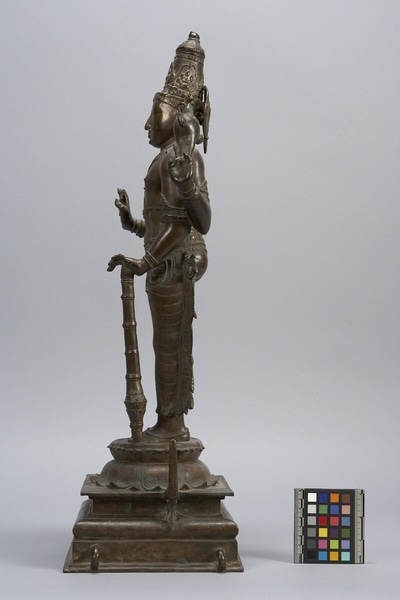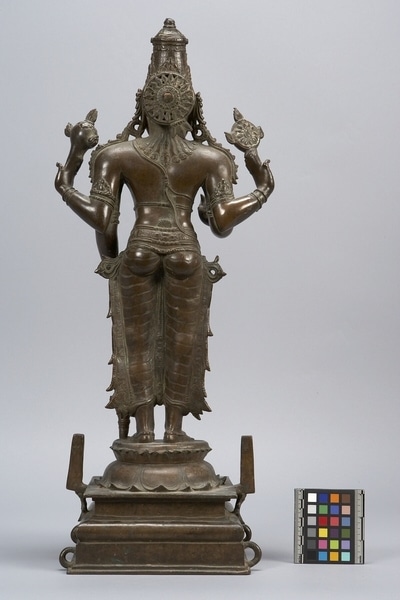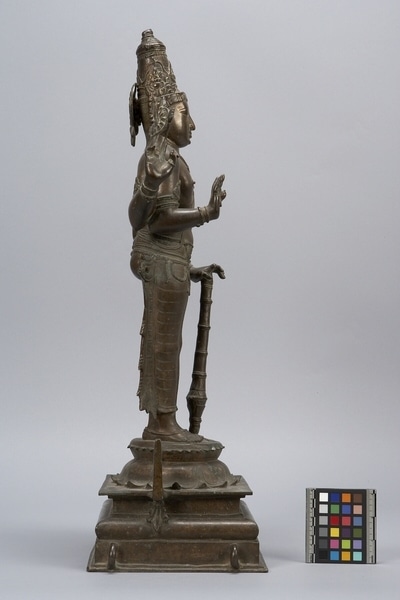Figure Item Number: Eg438 from the MOA: University of British Columbia




Description
Bronze statue of Vishnu standing on a lotus pedestal with a conical headdress, ear ornaments, necklaces and skirt with girdle. Four arms: rear hands hold a shakra and a noose; front left hand rests on a cane; front right hand held palm upwards.
History Of Use
Temple processional figure; bars can be passed through the loops at each side of the base for carrying it in a procession.
Narrative
In October 2009 Prabakar Visvanath, a Hindu priest for the Murugan Temple in Richmond, B.C., was invited to come to MOA to conduct a puja ritual for this Vishnu figure. The purpose of the puja is to invoke a deity (in this case, Vishnu) as a guest in the temple or home (or, in this case, museum). The sacred image (figure) is like a focal point wherein the spirit of the deity is invited to reside for the duration of the ceremony. A puja normally involves welcoming and seating of the deity; washing the feet, hands, and mouth; bathing, dressing and ornamenting the deity; feeding and worship with incense, lamps, and prayers; and finally, sending back or releasing the deity from the receptacle. The sacred bathing (ritual purification) part is called the abishekam. Prabakar bathed the image with a series of liquids (milk, a mixture of water and turmeric, and fruit salad), and rinsed it with water, before dressing it. The ritual was recorded on digital video for display as part of the exhibition “Border Zones: New Art across Cultures,” in 2010.
Item History
- Made in Thanjavur, Tamil Nadu, India
- Owned by Carol George and James George before November 24, 1986
- Received from Carol George (Donor) and James George (Donor) on November 24, 1986
What
- Name
- Figure
- Identification Number
- Eg438
- Type of Item
- figure
- Material
- bronze metal
- Overall
- height 61.0 cm, width 25.0 cm, depth 19.5 cm
Who
- Culture
- South India
- Previous Owner
- Carol George and James George
- Received from
- Carol George (Donor) and James George (Donor)
Where
- Holding Institution
- MOA: University of British Columbia
- Made in
- Thanjavur, Tamil Nadu, India
When
- Ownership Date
- before November 24, 1986
- Acquisition Date
- on November 24, 1986
Other
- Item Classes
- carvings & sculpture
- Condition
- good
- Current Location
- Case 104
- Accession Number
- 1183/0007